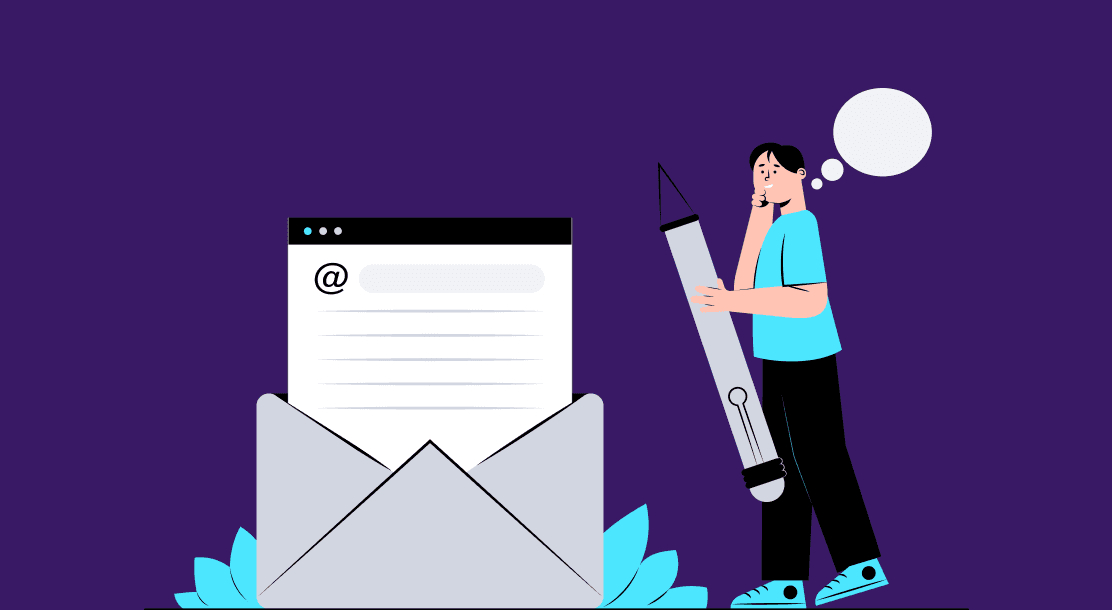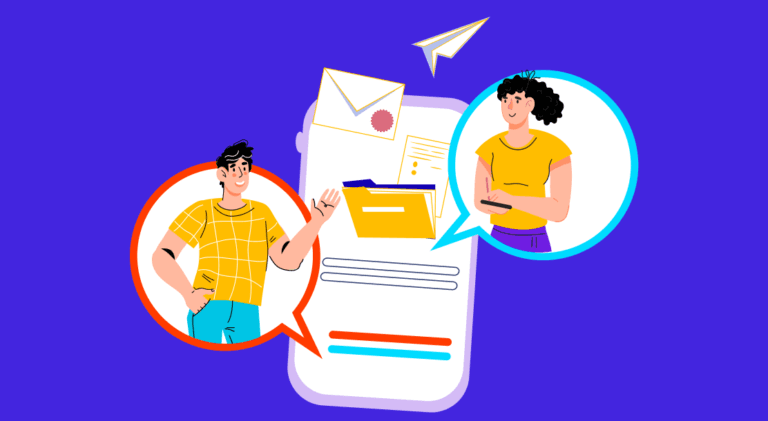
Table of Contents
- How to Write the Perfect Email Subject Line: 20 Helpful Tips
- Key Takeaways
- Conclusion
- FAQs
An email subject line is the single line of text that readers see when an email reaches their inbox. Often, your subject line is the first thing a potential recruiter or customer sees. We need not amplify the importance of writing the perfect email subject line, as it is understood. An effective subject line for email marketing could make your content marketing a game-changer. Some tips for writing email subject lines are that they must be informative, catchy, and concise.
How to Write the Perfect Email Subject Line: 20 Helpful Tips
An effective subject line attracts the attention of your readers. Here are some email subject line tips to help you make the perfect first impression.
1. Hyper-personalization is key
We are bombarded with tons of emails every day, promotional and otherwise. If you are wondering how to write the perfect email subject line, the answer lies in hyper-personalization. Your email subject line must be attention-grabbing. If you have a wide spectrum of audiences, the same subject line would not work for everyone. Creating a buyer persona will help you produce content tailored to your target audience’s needs.
Learn about your subscribers’ preferences, so that you can send them content that caters to their requirements. Personalization blends well with targeted automation, such as post-purchase follow-ups and birthday deals. Use merge tags to personalize the subject lines with every recipient’s name or location. For example: “Hello Anirudh, we have curated these styles for you.”
2. Convey urgency occasionally
Conveying urgency in your email subject line compels your readers to take action immediately. Urgency tactics work for limited-time deals. But, be mindful so as to not overuse them. Use these subject lines sparingly and only when the occasion genuinely requires immediate action.
3. Avoid spammy subject lines
If you are sending promotional emails, try to structure your email in a way that it appears genuine. Use a simple and eye-grabbing email subject line and send it from your company’s email address. Including your name and your company’s name in the sender’s email address adds a personal touch, and makes your email more credible.
For example, “Sam from XYZ company” works well with users since they can connect with you and may recognize your company.
4. Simple is effective
Try to use shorter email subject lines, as most people read emails on handheld devices. Longer lines don’t work too well in mobile view. If you cannot hold the attention of your readers for at least a few seconds after they read your email’s subject line, you won’t be able to get them interested in your product or services. Ensure that the subject line is not more than 50 characters (around eight to nine words). Make sure you use simple, relatable language.
5. Mix numericals with alphabets
If you are hosting a sale or offering discounts on your website, mention that in the email subject line. An effective subject line for email marketing would make the reader want to stay and read the whole email. Including numbers and data in your subject line is a great way to capture your recipients’ attention. Zomato, the food delivery platform, is nailing their email marketing campaigns with email subject lines. They personalize their content, use numerals, and keep it simple and short.
6. Avoid overusing punctuations
Use a maximum of three punctuation marks in your subject line. Too many punctuation marks can make your email look spammy. Also, do not use a question mark and exclamation point in the same line. “Want a quick solution? Subscribe now!” An email with a subject line like this gets directed to your spam folder.
7. Include offers and discounts
Pique the reader’s interest by mentioning offers in the subject line. Whether you are providing a service, discount, or giving out free stuff, make sure that it appears in the subject line and get to the offer quickly.
Here are some examples that mention offers in the subject line.
- 50% off of our autumn sale
- Free gift to the first 10 visitors
- Refer and get your next service free
8. Keep it relevant
An effective subject line that would prompt your users to keep reading has to be relevant to the content of your email. Users subscribe to an email list because they want to be kept informed about your offers and services. Please do not use clickbait to make your users read something irrelevant. It would lead to a loss of trust and engagement.
9. Avoid using generic email addresses
“[email protected]”—such email addresses do not help your case. Avoid using generic sender names and send emails from genuine email IDs. Readers receive an enormous amount of spam emails nowadays, and they are not interested in opening emails sent from automated servers.
10. Do not make false promises
Don’t make false promises in the subject line. Be precise about what your product offers and highlight it in your advertisement headlines. False information may displease your readers and they will not trust your content in the future. It results in a lower engagement and you are likely to lose engagement.
11. Tell recipients what’s inside

If you are delivering a product or gift, mention it in the email subject line. One tip for writing subject lines that your customer would be prompted to open is to make it as appealing as possible. If it does not grab their attention, it won’t work. Two examples include “Your gift voucher is inside”, or “Your horoscope for January 2022”. These advertisements clearly indicate that something is waiting for the reader inside the email.
12. Make it fun

People do enjoy a good pun. Go ahead and add some pun to your subject lines. Crafting catchy headlines will help grab and retain users’ attention.
13. Pay attention to segmentation
Since email blasts are sent out to several people at once, it may not be relevant to some. For example, sending offers and deals of a barbeque house to a vegan does not make sense. Segment your email list with the help of actions your customers have taken, the forms they have filled, the industries they follow, and their personal preferences. An effective subject line for email marketing makes an effort to personalize their readers’ experience with the help of list segmentation.
14. Use concise language
It is always better to use simple and concise language, as compared to complex and elaborate language. Users usually skim through their emails really quickly. If your subject line is clear, there is a good chance that they will open it.
15. Use action-oriented words
Action-oriented subject lines make your email stand out from other emails. You can begin your subject line with an action verb, such as learn, register, download, activate, join, update, or sign up, to motivate your readers to open the email and respond.
16. Make your audience feel special
Make your audience feel as if they are the only ones who are receiving that email. When people feel a sense of belonging, it builds loyalty. Relatability and authenticity always go a long way. Your email subject line has to compel the recipients to convert. Some of the examples of such subject lines include:
- “You’re invited.”
- “ An exclusive offer for you.”
- “We’ve missed you.”
17. Compel your readers to think
If you can prompt your reader to think and even reply to your email, consider your email subject line a game-changer. Asking a question in the subject line draws your readers’ attention. Ask a question that is relevant to your recipients’ buying behavior.
An example is “Did you find what you were looking for?” You can use this to follow up with a website visitor. They were clearly looking for something on your website. Ask how you can be of assistance. Provide some value for free and make your audience willing to invest their time in your brand.
18. Avoid using all caps
Using all caps is equivalent to shouting and you certainly don’t want to yell at your recipients. Subject lines such as “REGISTER NOW!” appear completely rude, and those like “ATTENTION SUBSCRIBERS!!!” make your email look like spam. According to a study by HubSpot, more than 85% of respondents prefer a subject line with all lowercase letters.
19. Use appealing preview text
Preview text appears near the subject line and gives your recipients a taste of what your email is going to be about. If you do not set the pre-text yourself, the email client pulls up text automatically from the body of your email, which may look messy. So make sure you choose appealing preview text to engage your reader.
20. Use A/B testing to determine open rates
Experiment with your email subject lines. You should always perform A/B tests for your subject lines and change the wording as per the results. It gives you an idea about what works best for your readers: questions or statements, numbers or percentages, etc.
Key Takeaways
- Make your email subject line as personalized and relevant to your audience as possible.
- Avoid using too many punctuations and capitalizations, as it makes your email look like spam.
- Craft a catchy subject line with relevant puns.
- Use action-oriented words to create a sense of urgency in your subject lines.
- Keep it simple and relatable.
Conclusion
It is quite surreal to imagine that a tiny thing like an email’s subject line could be a potential lead generator. Your product may be the world’s best, but if it does not reach your audience, it is of no use. Hence, it is important to refer to email subject line tips from time to time. Incorporating effective subject lines motivates a large number of subscribers to open your emails. This sets the stage for further involvement, which means more readers will check out your offers. They might even buy your product or subscribe to your newsletters. An effective email subject line is crucial to a successful email marketing campaign.

FAQs
Make your audience fill forms about their interests, take feedback from them on what they would like to see on your blog, or what they hated about it. You will be surprised at how honest some of those responses would be! Take inspiration from them and devise your next email. Personalize your subject line based on the content of the email and what your audience wants.
You must never buy email lists, for half of them are not genuine and most importantly, they may not contain your target audience. Email campaigns are not just about sending a bunch of emails to anyone. It is about sending carefully crafted, relevant emails to some subscribers with the intention of converting them into customers.
Sending an email twice or three times a month builds a connection with your audience. Sending four emails in a month would also be fine. If you have regular offers, you can send emails once in two weeks. Anything more than this will be considered spam.
Send well-crafted emails to your audience with a relevant subject line. Do not always send offers and sales campaigns. Talk to your audience, share your experiences, tell them about your brand and how it came into being, and share behind-the-scenes snippets. Everyone loves stories. To build a loyal audience, you have to connect with them on a more personal level.
Leave a CTA or ask users to respond to your newsletter or emailer. You can also ask them for constructive feedback on social media platforms. To track your email campaign’s success rate, check how many people are clicking on your links. Click-through rate (CTR) is one of the most important metrics to gauge the success of an email marketing campaign.
Latest Blogs
Explore how Google’s 2025 AI search updates triggered ranking chaos. Learn actionable strategies to adapt your SEO for AI Overviews, zero-click searches, and SERP volatility. Stay ahead now.
Learn how to rank on AI search engines like ChatGPT, Perplexity, and Gemini by optimizing your content for authority, structure, and relevance. Stay ahead in AI-driven search with this strategic guide.
Explore the best healthcare SEO services for your medical practice. Improve online visibility and effectively reach more patients in need of your services.
Get your hands on the latest news!
Similar Posts

Email Marketing
6 mins read
11 Tips to Design Impactful Email Banners

Design
9 mins read
7 Benefits of a Simple Mailer Design

Email Marketing
7 mins read